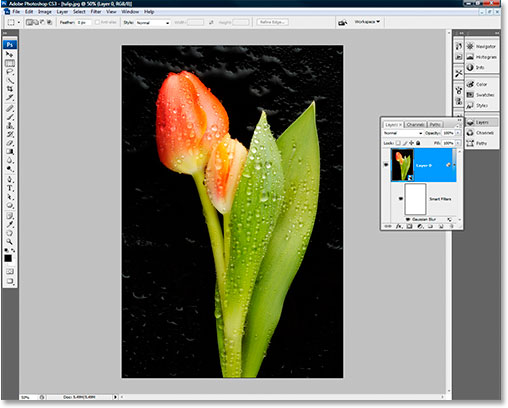Mastering Visual Alchemy: A Comprehensive Guide to Photoshop CS3 Smart Filter Blend Modes and Opacity

Introduction:
Adobe Photoshop CS3 marked a significant milestone in the evolution of digital imaging, introducing powerful features that revolutionized the way photographers and designers approached image editing. Among these features, Smart Filters, Blend Modes, and Opacity settings emerged as essential tools for creating nuanced and visually captivating compositions. In this extensive guide, we will unravel the intricacies of Photoshop CS3’s Smart Filter Blend Modes and Opacity, providing a comprehensive exploration of their capabilities and applications.
Section 1: Understanding Smart Filters in Photoshop CS3
Smart Filters in Photoshop CS3 represent a paradigm shift in non-destructive editing. Unlike traditional filters that permanently alter pixel data, Smart Filters are dynamic and can be adjusted or removed at any time. This flexibility empowers users to experiment freely with various filters without fear of irreversible changes to their original image.
Section 2: Activating Smart Filters and Creating Smart Objects
To leverage Smart Filters in Photoshop CS3, begin by converting your layer into a Smart Object. Right-click on the layer and choose “Convert to Smart Object.” Once the layer is a Smart Object, any filters applied become Smart Filters, allowing for continuous adjustment and refinement.
Section 3: Applying Filters and Exploring Blend Modes
Smart Filters in Photoshop CS3 support an array of filters, each with its unique visual effect. Experiment with filters such as Gaussian Blur, Sharpen, or Distort to achieve different results. Blend Modes, found in the Layers panel, enhance the creative possibilities by controlling how the Smart Filter interacts with the underlying layers. Modes like Overlay, Multiply, or Screen can dramatically alter the appearance of the filtered layer.
Section 4: Understanding Opacity Settings for Smart Filters
Opacity serves as a pivotal parameter in controlling the transparency of Smart Filters. Located in the Layers panel, the Opacity slider allows users to fine-tune the intensity of the applied Smart Filter. Adjusting the opacity provides a subtle touch or a bold visual impact, depending on the creative intent.
Section 5: Creative Applications of Smart Filter Blend Modes
Blend Modes offer a myriad of creative applications when combined with Smart Filters. Experiment with different modes to achieve various effects. For instance, using the Overlay blend mode can enhance contrast and saturation, while the Soft Light blend mode imparts a subtle, diffused glow. The interplay between Smart Filters and Blend Modes unlocks a spectrum of possibilities for photographers and digital artists.
Section 6: Achieving Vintage Looks with Blend Modes and Opacity
For those seeking to infuse a vintage aesthetic into their images, Photoshop CS3’s Smart Filters, Blend Modes, and Opacity settings provide a potent toolkit. Apply filters like Gaussian Blur or Noise, experiment with Blend Modes like Multiply or Sepia, and fine-tune the Opacity to transport your photos to a bygone era with a modern twist.
Section 7: Creating Dreamy Effects with Smart Filters
The combination of Smart Filters, Blend Modes, and Opacity settings opens the door to dreamy and ethereal effects. Experiment with filters like Gaussian Blur or Radial Blur, use modes like Screen or Lighten, and adjust the Opacity to create a soft, otherworldly ambiance. This approach is particularly effective for portrait photography and artistic compositions.
Section 8: Precision Editing with Smart Filters and Opacity Masks
Photoshop CS3 enhances precision editing with the integration of Opacity Masks for Smart Filters. By adding an Opacity Mask to a Smart Filter, users can selectively apply the filter to specific areas of the image. This level of control ensures that the desired effect is precisely targeted, leading to a more polished and refined result.
Section 9: Layering Smart Filters for Complex Effects
Take your creativity to the next level by layering multiple Smart Filters with varying Blend Modes and Opacity settings. This approach allows for the creation of complex and intricate effects. Combine filters like Blur, Sharpen, and Distort, experiment with different Blend Modes, and adjust Opacity to craft compositions that are visually arresting and conceptually rich.
Section 10: Mastering Workflow Efficiency with Smart Filters
In Photoshop CS3, Smart Filters streamline workflow efficiency by enabling non-destructive editing. This is especially advantageous for photographers and designers who seek to experiment, iterate, and refine their work seamlessly. The ability to toggle Smart Filters on or off, adjust settings, and reorder filters contributes to a fluid and efficient editing process.
Conclusion:
Photoshop CS3’s Smart Filter Blend Modes and Opacity settings represent a marriage of creative control and non-destructive editing. By harnessing the power of Smart Filters, experimenting with Blend Modes, and fine-tuning Opacity settings, photographers and designers can elevate their images to new heights of visual sophistication. This comprehensive guide serves as a roadmap for navigating the intricacies of these features, encouraging users to embark on a journey of artistic exploration and expression within the realm of Photoshop CS3.




